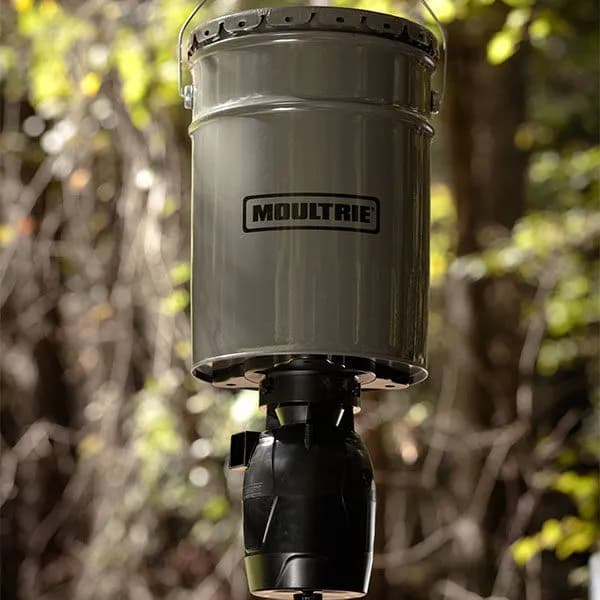Deer feeders are an essential tool for attracting deer, whether you’re a hunter, wildlife manager, or backyard hobbyist. They provide a reliable source of food for deer in areas where natural food sources may be scarce. Including assisting in attracting deer to your property for hunting or observation purposes. In this article, we’ll explore the benefits of using a deer feeder, the different types of feeders available, and some tips for getting the most out of your feeder.
One of the biggest benefits of using a deer feeder is that it establishes a pattern of behaviour in deer, by providing a reliable food source. The presence of a feeder over time releasing food at the same time each day, will train deer to migrate to the feeder at feeding time. Feeders can also be used to supplement the diet of deer in areas where there is plenty of natural forage available, depending on the purpose.
There are several different types of deer feeders available, each with its own set of features and benefits. For example, some feeders are gravity-fed, which means that feed is dispensed automatically as the hopper empties. Others are powered by a battery and/or solar kit, which have a programmable digital timer that allows you to set specific feeding times. There are also feeders that are mounted on a tripod or other structure such as a hanging feeder or strap on feeder making it easy to move the feeder around your property.
Deer Feeder Types
There are 2 main types of feeder heads available, featuring different casting patterns. The most popular feeder head casts the feed in a 360 deg field around the hopper, alternatively the directional feeder head casts the feed in one direction covering a 30 deg field. Please keep in mind feeders are designed to cast whole corn kernels. We strongly recommend you do not use a feed that is dusty or powdery as this may cause the feeder head to clog or fail. Some of Moultrie’s Deer feeder heads can recognise when the feeder is jammed and deploy a reverse spin to unclog the feed.
When selecting a deer feeder, it’s important to consider the size of your property and the number of deer that you expect to feed. If you have a large property or a large population of deer, you’ll want to choose a feeder with a large capacity hopper. It is important to consider the quality of the feeder, when selecting the feeder. Moultrie was the first in feeders in 1979 and have many years of experience and development of their products.
Once you have your deer feeder set up, it’s important to pay attention to the feeding schedule. The best time to feed deer is in the morning or in the evening, when the temperature is cooler, and the deer are most active.
In conclusion, deer feeders can be an essential tool for any deer enthusiast, hunters, or observers to establish a pattern of behaviour in the Deer. With the various types of feeders available, it’s important to choose the one that fits your needs and budget. Remember to set up the feeding schedule at the right time and the variety of feeds.
The use of Trail cameras along side feeders allows you to collect invaluable data on the deer. For instance which direction the deer are coming from and leaving in, whether or not the target animal is eating the cast feed. How many deer are in the vicinity and eating or approaching the feeder. As well as identifying if the same deer are adding the free feed to their schedule. Gear up with a reliable pair of eyes watching the feeder 24/7.
For any further information or advice on Deer feeders give us a call!


